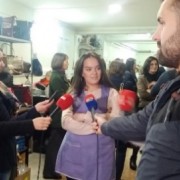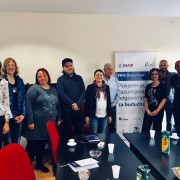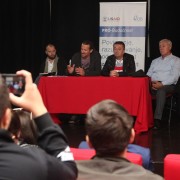Speeches Shim

Until recently, there was no single place where investors could obtain clear and complete information about all the permits they needed to build an electric power plant in Bosnia and Herzegovina (BiH). Within the complex organization of the country – 13 governments: the state, two entities, and 10 cantons – and the numerous permits required, there is no single body to coordinate the process and communicate with potential investors.

Unlike most of her peers in Bosnia and Herzegovina (BiH), Vanja Predanović decided at the age of 19 that it was time to find a job, become independent, and support her family financially. Vanja joined a training program at Belt, a local leather company that was planning to expand but needed labor with specific skills to do so. And she got the job.
For the first time, household consumers and small businesses in Bosnia and Herzegovina (BiH) can compare electricity prices and shop around for the best deal. Local regulators from BiH, prominently supported by USAID, publicly launched an online electricity price comparison tool, www.uporedistruju.ba, in December 2018. This one-of-a-kind tool will help customers to better understand the electricity sector and, more importantly, save money on their electricity bills.

During a visit to Bosnia and Herzegovina in 2018, USAID Deputy Assistance Administrator Gretchen Birkle met with students, professors, war victims, and peace activists to discuss the intersection of religion and politics and its effect on the country’s development at the Sarajevo offices of Catholic Relief Services, a partner in USAID’s PRO-Future project.

Gathering students from three different high schools from three countries – two of which were at war in the nineties – is a complicated feat in itself, but to gather them to hear multiple personal accounts from that war might be a first in Bosnia and Herzegovina (BiH) and this region. Yet USAID’s PRO-Future project – developer and promoter of its ‘Platform for Peace’ – did just that.

Comment
Make a general inquiry or suggest an improvement.